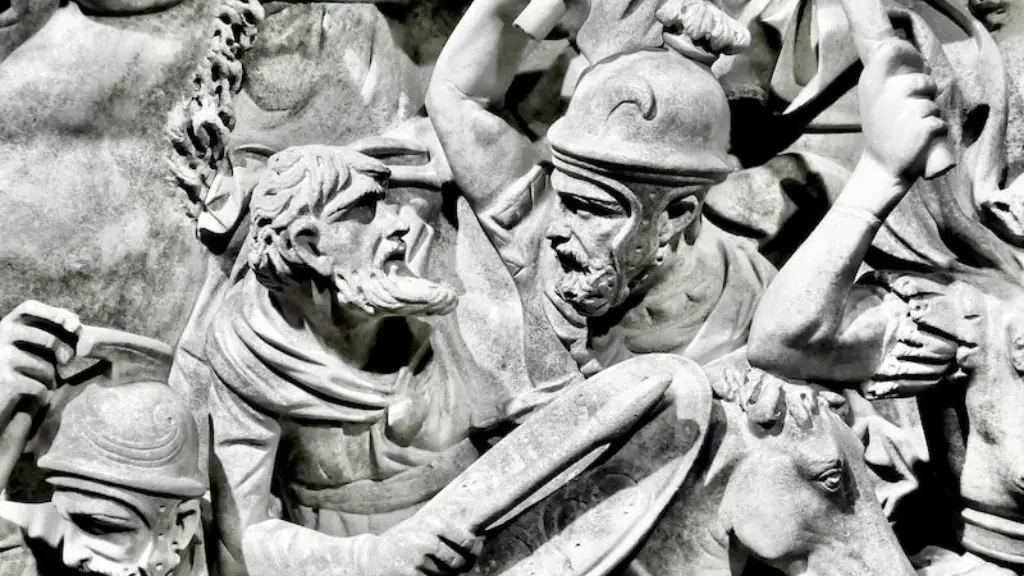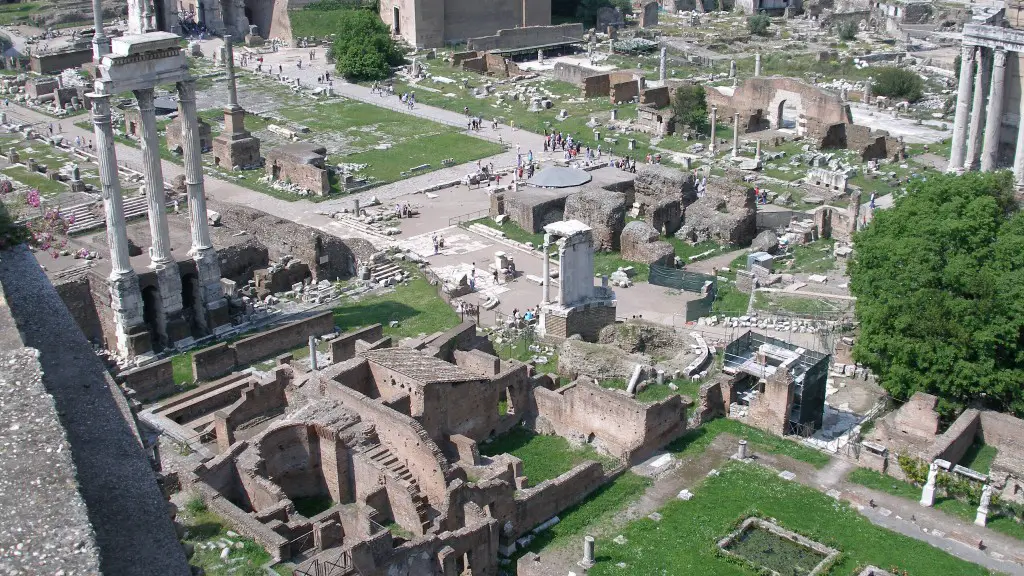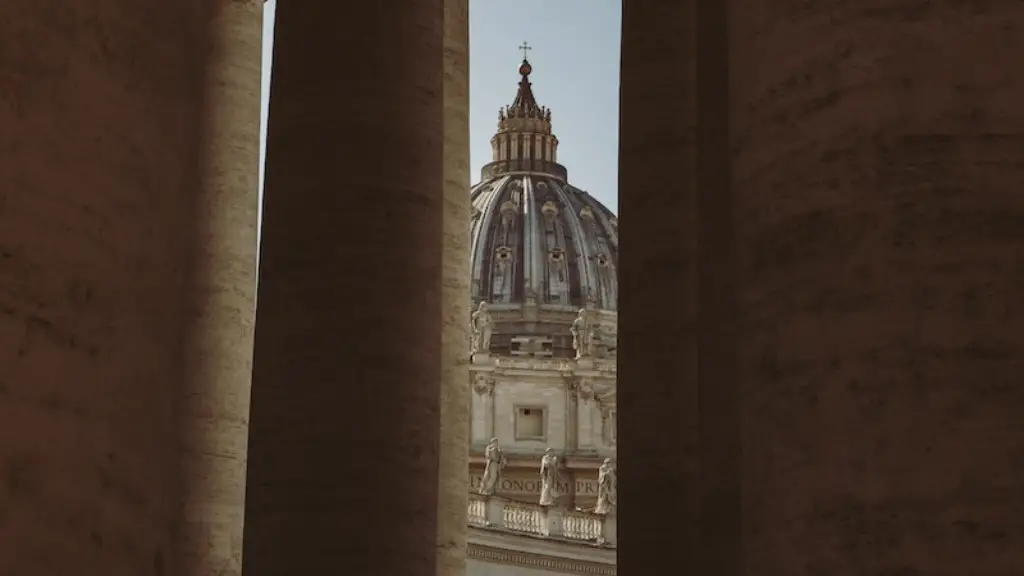The months and calendar of Ancient Rome were unique and differed largely to how we view calendars today. Rome’s calendar was discovered as far back as 8th century BC. The Roman calendar was divided among agricultural and religious feasts, as well as being used for scheduling military campaigns and state holidays. The facts shed light into the power and sophistication of Rome, one of the world’s longest surviving civilisations.
The twelve months of the Roman year were loosely based on the phases of the moon. This lunar calendar, the Kalendae, would later develop into the Julian and Gregorian calendars we use today. It’s thought the Roman calendar was invented by the ancient Etruscan civilisation around 7th century BC.
Each year began with the first full moon after the winter solstice, which by tradition was marked by the Kalendae, the 1st of March. The ten months were named after gods, leaders and festivals. The months began with Martian and ended with December, from Latin ‘decem bore’ meaning ‘ten’. After December, the five days before the Kalendae were considered non-days, or intercalary time.
The original calendar consisted of 10 months due to the fact the early Roman year had only 304 days. The seasons were based on the Etruscan calendar, beginning from the vernal equinox in late March. Since Roman farmers knew the crops wouldn’t grow with cold temperatures in December, January and February were not included. This issue was eventually tackled by adding an extra month, Ianuarius.
The vernal equinox was measured by the sun and coincided with the return of warmer temperatures. Thus, the Roman calendar became concentrated on the spring-tailored strategy, beginning in March. The beginning of the Roman year fluctuated throughout Roman history, with the earliest recorded beginning on the 1st of January. Over the years, the leaders changed the beginning of the calendar and the length of the months to better suit the seasons.
Changing Times
As time progressed and Rome’s scope of power expanded, so too did the complexity of its calendar. Changes were made to make it work better for facilitating religious and public events under the rule of Julius Caesar in 50 BC. This acted as the beginnings to the Julian calendar, which held the 12 familiar months from January to December, plus a 13th month of 30 days in an intercalary year.
The Julian calendar was adopted throughout the Roman Empire and larger regions in Europe. Those who didn’t agree with the changes made by Caesar would later become the foundation for the Islamic calendar. Despite honouring the same divine gods as Rome, the shaded lunar calendar followed 12 months of 354 or 355 days.
In an attempt to keep up with the solar year, the Roman calendar continued to be subject to influence. Augustus Caesar in 8 BC added the extra days of a leap year. However, this still did not resolve the Solar cycle. It took the invention of the Gregorian calendar in 1582 to bring the system into full synchronisation.
Other Influences
It’s worth noting that Ancient Rome wasn’t the only civilisation to influence the way we view months today. There are various competing calendars throughout the world, sometimes arising independently of the Roman system.
The Sumerians, for example, only had ten months out of their lunar cycle. This spread to Babylonian culture, some 3000 years ago, where the months were in correspondence with the deities that would reach their zenith in public worship. The ancient Egyptians similarly had twelve months, though for them these served as divisions of time. Each month aligned with the cycle and flooding of the River Nile.
The Hebrew Calendar is similarly based on the moon and is of great importance to many contemporary religions such as Judaism. As a lunar-solar hybrid, each month begins with the sighting of the first crescent moon after a new lunar cycle. Even then, due to discrepancies between the months and seasons, an extra month must often be added in.
Persian Calendar
The Persian Calendar is also a combination of solar and lunar calendars, but unique in that there are two versions. The first is called the ‘Mah Almanac’ (great year) consisting of 19 solar months and 354 days, with additional years being added periodically so that the celebration remains in tune with the changing seasons. The second, the ‘Bad Almanac’ (small year) consists of twelve months of 29 or thirty days, making up a 354 day year.
The Islamic calendar is derived from the lunar-based Arabic calendar. This came about after Muhammad interacted with local Meccan tribes, and the months evolved over a period of time All four of these systems were the structural basis of the Gregorian calendar, with some cultural influences still visible in our contemporary calendar.
Research and Debate
In researching the development of our current calendar system, debates between faith and science continue to enliven and frustrate intellectuals. Since the earliest civilisation, humanity has strived to quantify the passage of time and plan for the future. Despite, technological advancement, the lunar cycle has continued to be the foundation for many cultures.
Ancient Roman society was no different and the intriguing complexity of their calendar and months stand out as a testament to their brilliance. How the months were used by Rome is an area that continues to be explored and debated today. From their admiration of gods to the pursuit of efficiency, the months of ancient Rome still echo today in our own calendar.
Influence of Religion
One popular area of concentration is the influence of religious practice and ritual. Ancient Romans practised numerous rites, most of which were centred around the home and family. This included festivals such as the Saturnalia, Lupercalia and Matronalia, each of which determined religious observance while enhancing the daily culture of Roman life.
Furthermore, the achievements of divine tutelaries were celebrated on a month-to-month basis. This Ancient Roman Pantheon gifted a deity to each month. These included Mars for March, Juno for June and Vulcan for August, among others. Acknowledging the divine isn’t a practice confined to Ancient Rome, and it’s interesting to consider how much of our current system is inherent from this.
Actual Use of Time
Beyond the religious elements of Ancient Rome, a great deal of attention revolves around the actual use of their months. Numerous scholars have tried to piece together the events and workings of society through the passage of time. Documents such as the Fasti, dating back to 6th century BC, were constructed to illustrate the passing of each month and the tasks that would need to be completed.
Ancient Roman society valued efficiency, and we can see this in the ways they divided their months. Each day hosted a new activity, with different organisations responsible for keeping track of the tasks associated with them. This included a designated day for the slaughtering of animals and, in later civilizations, a day of rest.
Ancient Rome’s Legacy
Ok, so that brings us to the end of our journey through the months of Ancient Rome. It’s clear stepping into the monthly nuances of Ancient Roman civilisation is no small task, and it’s worth bearing in mind that this is only a snapshot of the complexities of the calendar. While our contemporary system is considerably more synchronised than during Ancient Rome, it is testament to what a great civilization can achieve.
Ancient Rome’s implementation of time influences the intricacies of our lives. Where some may see chaos, Rome found an almost mystical way to calculate the movements of the heavens and bring order to their lives. Taking a look into their calendar system unlocks invaluable insight into the minds of a great culture and the ways they used their months.





